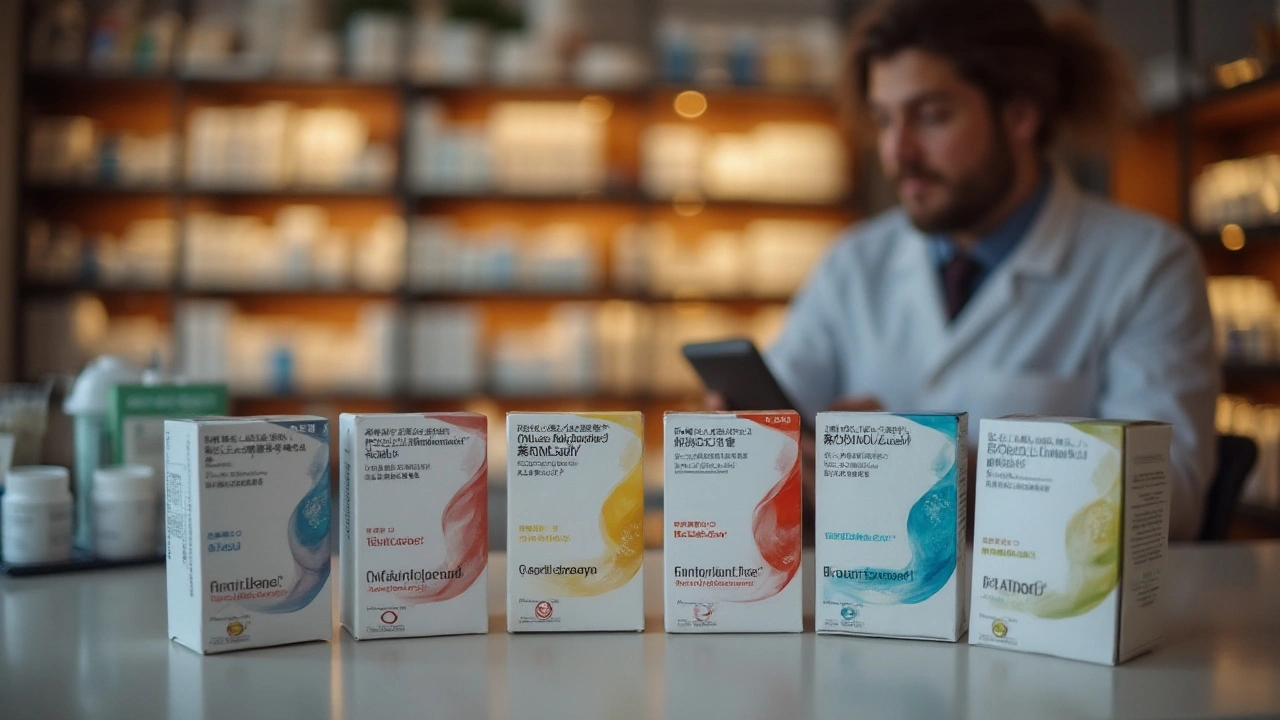Nausea Treatment: Fast Relief and Practical Fixes
Nausea can stop your day fast. Sometimes a sip of ginger tea works; other times you need a prescription. Here are clear, practical steps you can try right away and what to do if things don’t get better.
Quick at-home fixes and prevention
When nausea hits, sit up and breathe slowly. Sip plain water or clear soda in small amounts — big gulps often make nausea worse. Try ginger in any form: tea, candied pieces, or ginger ale made with real ginger. Peppermint candy or peppermint tea can calm your stomach too. Eat bland, dry foods like crackers or toast if you feel hungry. Avoid strong smells and greasy or spicy food until you’re better.
Acupressure on the P6 point (inner wrist, three finger-widths down) helps many people. Press firmly or wear a motion-sickness band for 20–30 minutes. Rest in a quiet, dim room; motion and bright lights can make nausea worse. Light activity like slow walking sometimes helps settle the stomach after vomiting, but avoid sudden movements.
Small frequent meals, avoiding greasy or very sweet foods, and choosing bland options like rice, bananas, and applesauce can prevent many episodes. Hydration matters: sip oral rehydration solutions if vomiting has caused fluid loss. Keep a short diary for a week to spot triggers — foods, stress, motion, or certain smells often show patterns that you can avoid.
Medications and when to seek care
For short-term relief, try over-the-counter meclizine or dimenhydrinate for motion sickness and vertigo-related nausea. Bismuth subsalicylate, the active ingredient in Pepto-Bismol, can help mild stomach upset and diarrhea-related nausea. Antacids may ease nausea linked to reflux. Read labels carefully for warnings about drowsiness, allergies, and interactions with other medicines you take.
If OTC meds don’t help, your doctor may suggest prescription drugs such as ondansetron, promethazine, or metoclopramide depending on the cause. For pregnancy-related nausea, the combination of doxylamine and pyridoxine is widely recommended and considered safe in most cases. Always check with your provider before starting any new medicine, especially during pregnancy or if you take other prescriptions.
Seek urgent care if nausea comes with severe abdominal pain, high fever, dehydration, blood in vomit, fainting, or confusion. Call your doctor if nausea lasts more than a few days, prevents you from keeping liquids down, or follows a new medication start. Persistent nausea can signal infections, metabolic issues, migraine, or side effects needing targeted treatment.
Simple fixes work for many people. Start with hydration, gentle foods, ginger or peppermint, and an OTC option if needed. If symptoms persist or get worse, get medical advice — faster treatment often means quicker relief.
Practical tips: try 250–500 mg ginger supplements up to three times daily or two to three cups of ginger tea. For motion sickness, take meclizine one hour before travel. Avoid heavy exercise right after eating. If you have liver disease or take blood thinners, ask a doctor before using herbal remedies or supplements.
Keep simple supplies, snacks, and remedies within easy reach daily.

Top 8 Alternatives to Motilium in 2024 for Nausea and Gastroparesis
Motilium has been a widely used medication for nausea and gastroparesis. However, there are various alternatives available as of 2024. This article explores eight potential replacements including Metoclopramide, Ondansetron, and newer treatments like Tegaserod and Itopride. Each option is thoroughly evaluated based on their benefits, drawbacks, and current availability in treatment practices, providing a comprehensive guide to these medications.
Read More